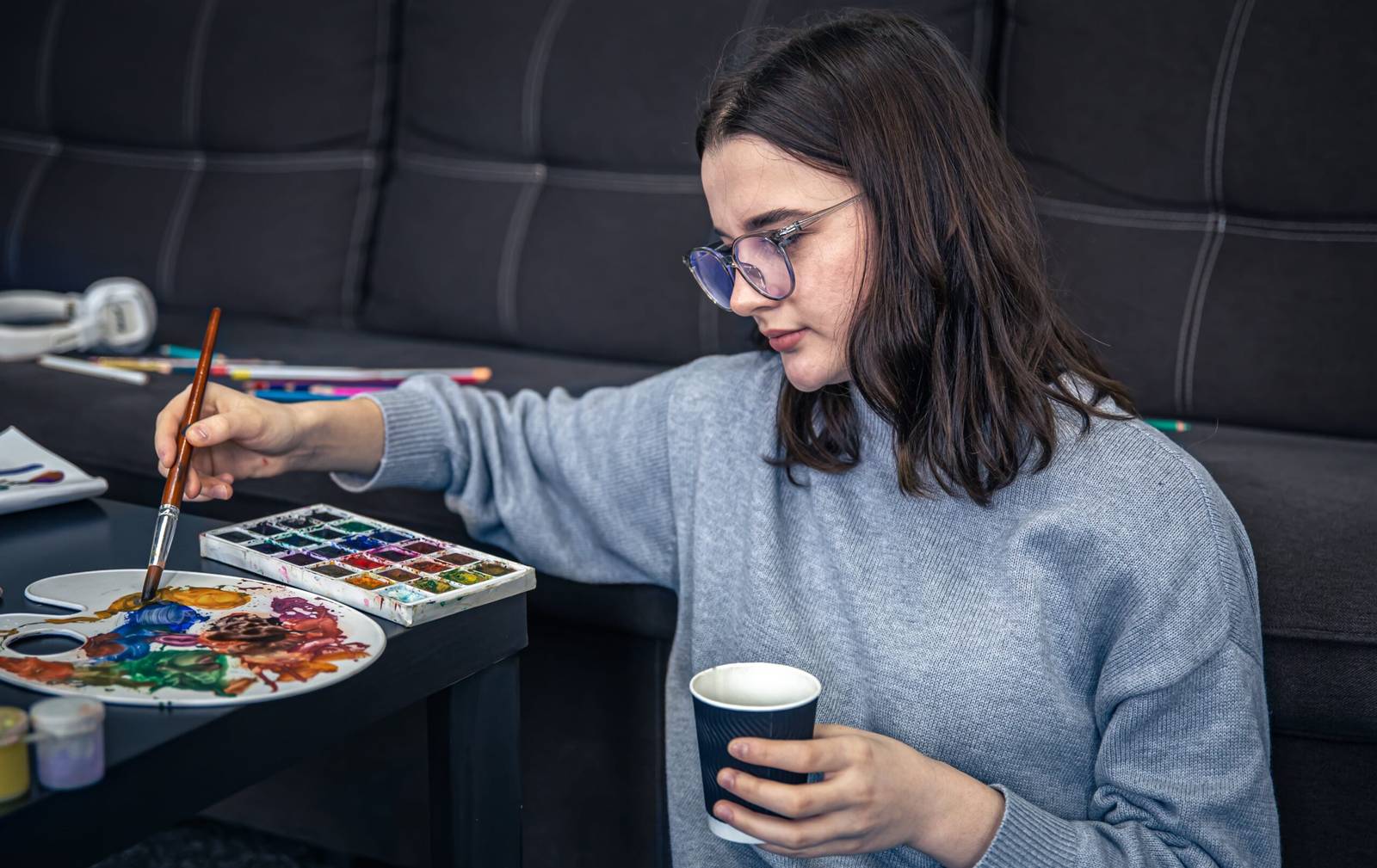The Psychology of Color in Canadian Graphic Design

by Web Digital
You know that a Canadian Graphic Design colors are a big part of how it looks. But have you ever stopped to think about why a bank uses blue or why a fast-food restaurant uses red and yellow? These are not random choices. They are strategic decisions based on the psychology of color, which is the study of how colors influence human emotions, thoughts, and behaviors. For a Canadian brand, understanding this is key to creating a powerful and memorable visual identity.
In this article, you will learn how different colors can affect people, what they mean in a Canadian context, and how you can use them to build a stronger connection with your audience.
The Emotional Language of Color
Every color has a personality. It can make you feel a certain way before you even read a single word. By choosing the right color palette, you can set the tone for your brand and communicate your values instantly.
Red: The Color of Passion and Urgency ❤️
Red is a powerful color. It is associated with strong emotions like passion, love, and excitement. It also creates a sense of urgency. Brands often use it for “Buy now” buttons or to announce a sale because it encourages people to act quickly. In Canada, red has a special meaning as it is a core colour of our flag. This gives it a sense of national pride, history, and courage.
- Best for: Brands that want to show excitement and energy, like a sports team or a fast-food restaurant. You should use it as an accent color to grab attention.
- Be Careful: Too much red can feel aggressive or overwhelming.
Blue: The Color of Trust and Calm 💙
Blue is one of the most popular colors in the world. It is a calming color that represents trust, stability, and reliability. This is why you see it everywhere, from banks and insurance companies to tech brands like Facebook and Twitter. Light blues can feel peaceful and serene, while darker blues feel more professional and formal.
- Best for: Businesses that need to build trust and authority, like financial services, healthcare, or B2B companies.
- Be Careful: Blue can sometimes feel cold or impersonal if you do not balance it with other, warmer colors.
Green: The Color of Nature and Growth 🌿
Green has a strong connection to nature, health, and growth. It can make people feel calm and refreshed. Brands use green to show that they are eco-friendly or focused on health and wellness. In Canada, with our vast forests and beautiful landscapes, green also has a strong connection to our natural environment.
- Best for: Brands in the health, wellness, organic food, and environmental industries. It is also often used for brands that want to show stability and wealth, like a financial company.
- Be Careful: Different shades of green have different meanings. A bright green can feel energetic, while an olive green can feel dull.
How Canadians Interpret Other Colors
While some color meanings are universal, culture can change the way people feel about a color. In Canada, our unique history, landscapes, and identity influence our perception of color.
Yellow: The Color of Happiness and Optimism 💛
Yellow is a cheerful, optimistic color that is great at grabbing attention. It is associated with happiness, sunshine, and warmth. Brands often use yellow to make people feel happy or to show their playful side. In Canada, it reminds people of the vast fields of canola flowers in the Prairies.
- Best for: Brands that want to feel youthful, energetic, and positive. You can use it for children’s products or for a fun, creative business.
- Be Careful: You should not overuse bright yellow, as it can be irritating.
Orange: The Color of Creativity and Warmth 🧡
Orange is a friendly, energetic color. It combines the passion of red with the cheerfulness of yellow. It represents creativity, enthusiasm, and warmth. Many food and drink brands use orange because it can make people feel hungry. In Canadian Graphic Design, orange is strongly associated with our national symbol, the maple leaf, especially in the fall. This connects the color to a feeling of autumn and natural beauty.
- Best for: Brands that want to feel approachable and innovative. It is a great color for consumer goods, creative agencies, and fun, playful brands.
- Be Careful: Orange can sometimes feel cheap or over-the-top if you do not use it correctly.
Purple: The Color of Royalty and Creativity 💜
Historically, purple was a hard color to make, so it was only used by royalty and the wealthy. This is why it is still associated with luxury, elegance, and power. It also has a mystical and creative side.
- Best for: Luxury brands, creative agencies, and products that want to feel high-end and unique.
- Be Careful: A dark purple can feel serious and overly formal. A light purple can feel romantic and soft. You should choose the shade that matches your brand’s personality.
White and Black: The Colors of Simplicity and Power 🖤🤍
White represents purity, cleanliness, and simplicity. It is the color of snow and is very common in minimalist design. You can use a lot of white space to make your design feel clean, modern, and open. For Canadians, white is also a core part of our flag and is associated with peace and honesty.
Black represents sophistication, elegance, and power. It can make a brand feel serious, professional, and luxurious. Many high-end fashion and technology brands use black to show their authority and sophistication. You can also use it to create a bold, modern look.
Recommended Posts

Web Design Portfolio Tips for Canadian Freelancers
September 27, 2025

The Cost of SEO Services in Canada
September 27, 2025

How to Use Google Business Profile for Local SEO
September 26, 2025
